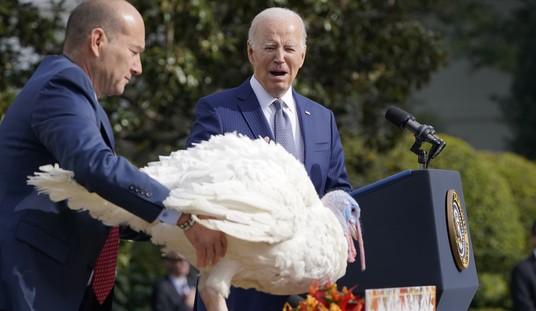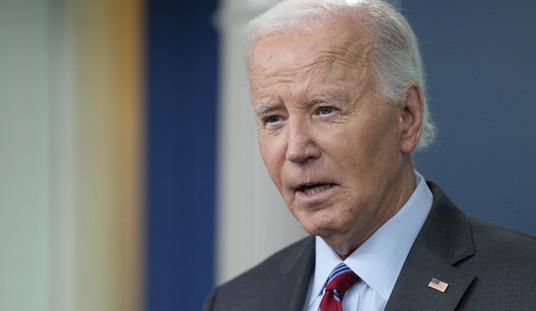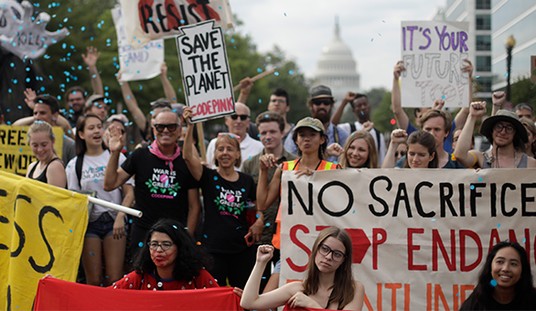American freight rail was technologically obsolescent and hamstrung by union rules and government rate regulation. American passenger rail was unprofitable and unreliable.
Freight rail was losing business to trucking firms. Passenger rail was losing out to cars on the new interstate highways and airplanes on long routes.
The past 40 years have seen a laboratory experiment on how to revive railroads. Government has gotten out of freight rail, while passenger rail has become largely a public sector function.
We've had a chance to see which works better and to understand why.
It took a while for the government to get out of the freight rail business. In 1973, Congress created Conrail, which took over the lines of the Penn Central and other Northeast railroads.
Despite rosy projections, Conrail racked up big losses, with the federal government picking up the tab.
Fortunately, the idea of transportation deregulation -- pushed by Ralph Nader as well as market-oriented think tanks -- was picking up steam.
In 1980, Congress passed and Jimmy Carter signed the Staggers Act, ending the rigid rate regulation by the 1887-vintage Interstate Commerce Commission. Conrail began making profits and was sold to private investors in 1987.
The following quarter-century has seen a renaissance of American freight rail. As a March 27 Wall Street Journal story relates, rail companies have been investing in rail yards, refueling stations and new tracks.
Recommended
They are building new bridges, widening mountain tunnels and "turning their networks into double-lane steel freeways." The Association of American Railroads says it will invest $14 billion this year, up from $6 billion in 2003.
But doesn't this mean higher costs? No, freight rail rates are less than half what they were in the early 1980s. That's because freight rail faces aggressive competition from trucking, which was also deregulated in 1980.
Each mode has its advantages. Freight rail is far cheaper per mile over long hauls. Trucks can deliver goods right up to the door. Train-truck and rail-rail competition has squeezed out huge amounts of cost.
That means cheaper goods and services for consumers. And a bottom line that prompted super-investor Warren Buffett to pay $44 billion to acquire BNSF (formerly Burlington Northern Santa Fe).
Passenger rail, alas, is a different story. It was a big money loser for railroad companies under the old regulatory regime, and they were happy to slough it off to the government-created Amtrak in 1971.
Amtrak was supposed to be a profit-making enterprise but would receive government subsidies, uh, just temporarily. It's still getting them 42 years later.
One reason is that Congress insists on passenger service in 46 of the 50 states. The long lines are huge money-losers, but if Amtrak cuts off service to Havre, Mont., someone will complain -- and get loads of publicity from the passenger-train lobby.
Amtrak is also saddled with union restrictions and procurement rules that mean that it loses money when it charges captive customers $15 for a hamburger.
Amtrak claims to make money on three lines in the Northeast, where population densities and travel distances make passenger trains a natural. But, curiously, it counts maintenance as a capital expenditure not an operating cost.
Amtrak has been attracting Washington-New York passengers who used to take airplane shuttles. But it's losing customers to private sector Chinatown buses with much lower fares and better Wi-Fi.
Barack Obama and 36-year Amtrak passenger Joe Biden want government to double down and build high-speed rail lines across the country.
"Imagine boarding a train in the center of a city," Obama said in April 2009. "Imagine whisking through towns at speeds over 100 miles an hour, walking only a few steps to public transportation and ending up just blocks from your destination."
The problem is most Americans live in suburbs, not central cities, and most destinations are not just blocks from public transportation.
The Obama administration is pumping money into California's lunatic high-speed rail project, whose estimated cost has jumped from $40 billion to $100 billion -- for a line between the metropolises of Fresno and Bakersfield.
That's nutty. And so may be the private investors who are trying to build Houston-Dallas and Miami-Orlando high-speed lines.
But they're betting their own money, with strong incentives to meet competition and squeeze out cost.
Just like the people who made freight rail work.
Michael Barone, senior political analyst for The Washington Examiner (www.washingtonexaminer.com), is a resident fellow at the American Enterprise Institute, a Fox News Channel contributor and a co-author of The Almanac of American Politics. To find out more about Michael Barone, and read features by other Creators Syndicate writers and cartoonists, visit the Creators Syndicate Web page at www.creators.com.
COPYRIGHT 2013 THE WASHINGTON EXAMINER
DISTRIBUTED BY CREATORS.COM

























Join the conversation as a VIP Member